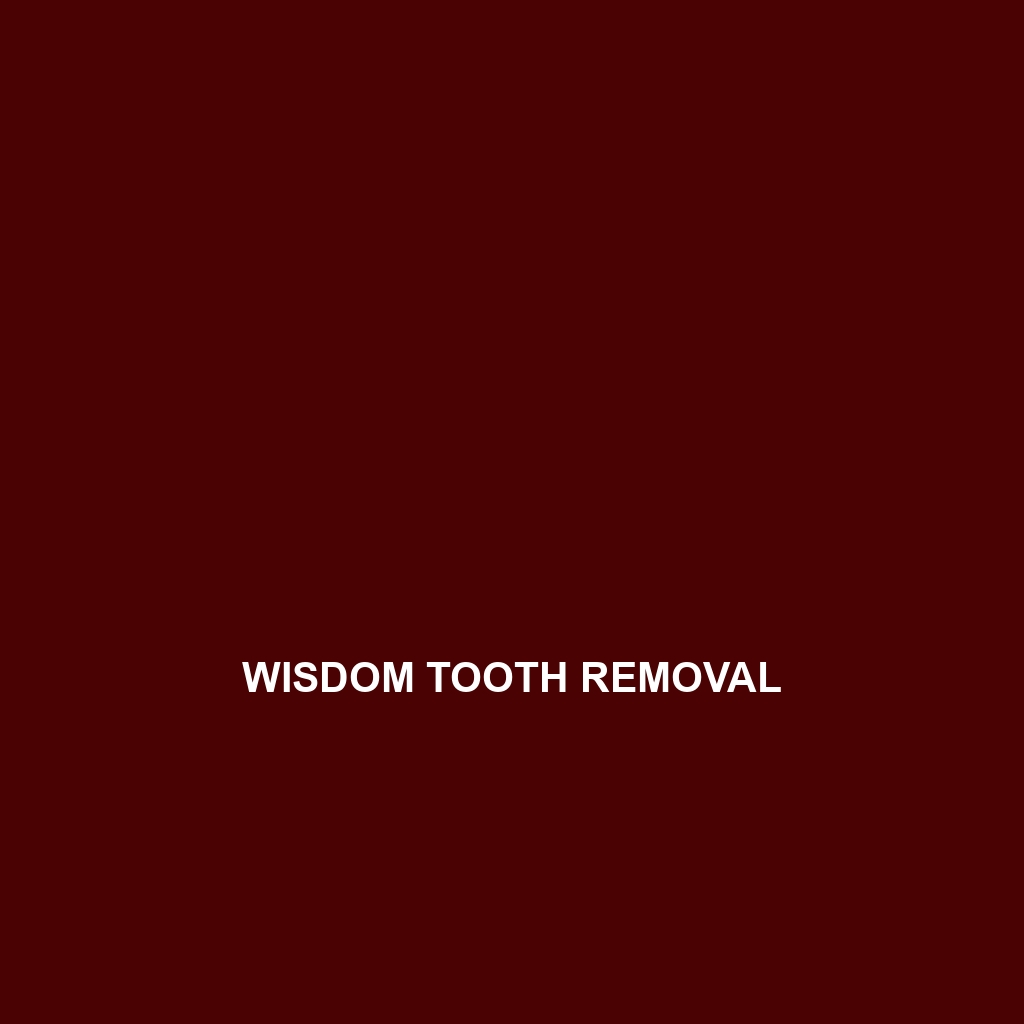Wisdom Tooth Removal:
Definition and Description of Wisdom Tooth Removal:
Wisdom tooth removal refers to the surgical procedure of extracting one or more of the third molars, commonly known as wisdom teeth. These teeth typically emerge in late adolescence or early adulthood, typically between the ages of 17 and 25. In many cases, wisdom teeth can become impacted, meaning they do not have enough room to properly emerge in the dental arch, leading to potential complications. This procedure is often performed by an oral surgeon or a dentist and may involve local or general anesthesia.
Causes of Wisdom Tooth Removal:
Several factors may necessitate the removal of wisdom teeth. These include:
– **Impaction:** When there is insufficient space in the mouth, wisdom teeth may become impacted, leading to pain, swelling, and infection.
– **Crowding:** Wisdom teeth can push against adjacent teeth, causing misalignment and dental crowding.
– **Cysts or Tumors:** In some cases, cysts or tumors can form around an impacted wisdom tooth, leading to further complications.
– **Infection or Decay:** Wisdom teeth are hard to reach for proper cleaning, making them susceptible to decay and gum disease.
Associated Symptoms of Wisdom Tooth Removal:
Patients may experience a variety of symptoms that indicate the need for wisdom tooth removal, including:
– Oral pain or discomfort in the back of the mouth.
– Swelling and tenderness around the gums.
– Difficulty opening the mouth.
– Bad breath or an unpleasant taste in the mouth.
– Jaw stiffness or swelling.
Diagnosis of Wisdom Tooth Removal:
A dentist or oral surgeon typically diagnoses the need for wisdom tooth removal through a combination of the following methods:
– **Clinical Evaluation:** A physical examination of the mouth to assess gum health and tooth position.
– **X-rays:** Radiographic imaging provides a clear picture of the teeth’s positioning and whether they are impacted.
– **Medical History:** Reviewing the patient’s dental and medical history to identify any symptoms and risk factors.
Risk Factors for Wisdom Tooth Removal:
Certain populations and lifestyle choices can increase the likelihood of requiring wisdom tooth removal. Key risk factors include:
– **Age:** Younger individuals are more at risk as wisdom teeth typically emerge in late adolescence.
– **Genetics:** Family history can influence the size of the jaw and the positioning of teeth.
– **Hygiene Habits:** Poor oral hygiene can lead to infections and complications with wisdom teeth.
Complications of Wisdom Tooth Removal:
If wisdom teeth are not removed and complications arise, the following issues may occur:
– **Infection:** Impacted teeth can lead to bacterial infections in the gums.
– **Abscess:** The formation of pus-filled pockets in the mouth, causing severe pain.
– **Bone Damage:** Cysts can damage surrounding teeth and jawbone.
– **Systemic Effects:** Infection may spread to other areas of the body if untreated.
Treatment Options for Wisdom Tooth Removal:
Treatment for wisdom tooth-related complications depends on severity but generally includes:
– **Surgical Extraction:** The primary solution for impacted or problematic wisdom teeth.
– **Pain Management:** Prescription or over-the-counter pain relievers for discomfort.
– **Antibiotics:** To manage infections related to the wisdom tooth.
When to See a Doctor for Wisdom Tooth Removal:
Individuals should seek medical attention if they experience:
– Persistent or severe oral pain.
– Signs of infection, such as fever or swelling.
– Difficulty opening the mouth or swallowing.
– Signs of decay or gum disease around the wisdom teeth.
Prevention of Wisdom Tooth Removal:
While it may not always be possible to prevent the need for wisdom tooth removal, patients can take steps to minimize risks:
– Regular dental check-ups to monitor the growth and positioning of wisdom teeth.
– Maintaining good oral hygiene practices.
– Early assessment of potential wisdom tooth complications by a dentist.
Statistics and Prevalence of Wisdom Tooth Removal:
Research shows that approximately 85% of individuals will need to have their wisdom teeth removed at some point in their lives, often due to impaction or misalignment. The procedure is among the most common dental surgeries performed globally, particularly amongst adolescents and young adults.
Personal Stories or Case Studies about Wisdom Tooth Removal:
Many individuals can share personal experiences regarding wisdom tooth removal decisions. For instance, a young adult may recount their struggles with discomfort and chronic infections, ultimately leading to the decision for surgical extraction, which significantly improved their oral health.
Myths and Misconceptions about Wisdom Tooth Removal:
Several misconceptions exist surrounding wisdom tooth removal, including:
– “Wisdom teeth always need to be removed.” Many individuals can keep their wisdom teeth if they grow in properly.
– “The surgery is extremely painful.” With advancements in anesthesia, pain management has considerably improved, making the procedure more comfortable.
Support and Resources for Wisdom Tooth Removal:
For those dealing with wisdom tooth issues, various support groups and resources are available. For more information, visit this support page for additional resources and help.
Conclusion about Wisdom Tooth Removal:
In summary, wisdom tooth removal is a common and necessary procedure for many individuals. Understanding the symptoms, risks, and treatment options can empower patients to make informed decisions about their dental health. It is always advisable to consult with a dental professional if you experience any related issues.
